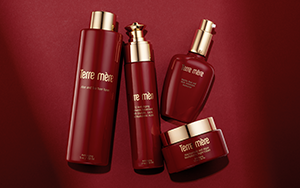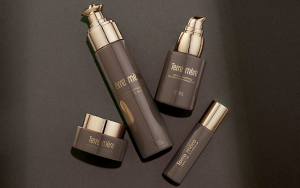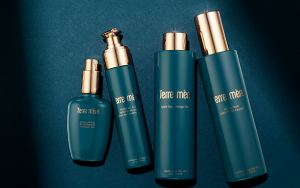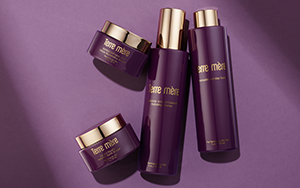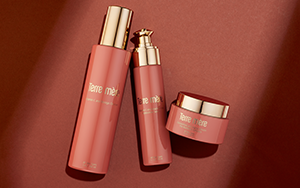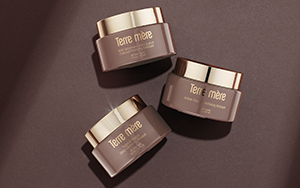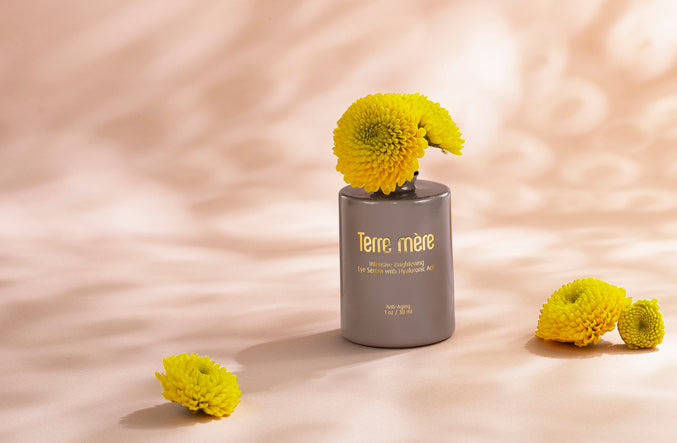
Skincare has a plastic problem, and no, we’re not referring to cosmetic surgery — we’re talking about packaging. In 2019, over 450 million skincare products flew off the shelves in the U.S. And while that’s great news for the skincare industry, it’s bad news for planet Earth. After all, those skincare products need to be packaged in something, and most of the time, that something is plastic.
Humans have created 8.3 billion metric tons of plastics since large-scale production of the synthetic materials began in the early 1950s. To add insult to injury, only 9 percent of that plastic ends up getting recycled. About 79 percent of it gets dumped into landfills, where it leaches toxic chemicals into the soil, poisoning the groundwater, marine ecosystems, and human food chains. Though skincare isn’t the only industry to blame for the world’s pollution problem, it certainly has an impact, especially as individually-packaged, single-use items (like sheet masks and under-eye patches) have recently risen in popularity.
Plastic may seem almost inescapable across the skincare industry, but it doesn’t need to be. Glass, plastic’s eco-friendlier counterpart, is a viable packaging alternative that is already heavily relied upon in the food and beverage industry — so why not in skincare?
How glass and plastic are manufactured, recycled, and discarded are quite different. As a result, their environmental impacts also vary greatly.
Plastic: A Life Cycle of Pollution
Plastic is created through the treatment of raw materials like crude oil and natural gas. Those raw materials are then combined with various chemical additives during production. Dioxins, phthalates, lead, cadmium, vinyl chloride, and other chemicals are added to plastic to change its properties, but unfortunately, those chemicals end up spilling into our environment and poisoning it.
Plastic is extremely durable, which means it doesn’t break down easily. A plastic bottle can remain in landfill for between 10 to 500 years before decomposing, leaching pollutants into the soil all throughout that time period. It’s possible to recycle plastic, but public investment in recycling systems is crucial for it to be recycled in the first place. Those systems aren’t everywhere, which means that even if you throw a plastic package into the recycling bin, there’s no guarantee it won’t just end up dumped into landfill. (If you’re unsure, you can discover if your town or city has a plastic recycling program here!).
That said, some plastics aren’t even recyclable at all, like straws and plastic bags. But for those that are, the process is tricky.
Broadly speaking, plastic recycling takes place in one of two ways. The first is a “chop and wash” procedure, in which the plastic is washed, ground into powders, melted, and then re-formed into new products. The second is chemical recycling, where the plastic is broken down with chemical solutions.
Because of its molecular structure, plastic breaks down and loses its quality every time it’s recycled. The same piece of plastic can only be recycled about 2 or 3 times before it’s rendered unusable. Moreover, each time plastic is recycled, virgin material (i.e. newly-made, non-recycled material) is added to help boost its quality, which means that recycled plastic isn’t fully recycled after all.
Glass Recycling Is Easy, Clean, and Efficient
Glass, on the other hand, can be recycled indefinitely. Domestic waste glass, known as cullet, is fairly easy to recycle and isn’t treated with toxins like plastic is. Better yet, it doesn’t undergo a loss in quality, no matter how many times glass is recycled.
During the recycling process, glass containers and jars are crushed and contaminants (such as labels, window frames, and cardboard) are removed. At this stage, mechanized color sorting also occurs, which separates brown, green, and blue glass from the clear. Once the glass is crushed and decontaminated, it’s mixed with natural raw materials to color or enhance its properties, melted into a furnace, and then molded into new bottles and jars. That’s pretty much it!
Mechanized color sorting occurs because not all colors of glass can be recycled together. Mixing different colors would tarnish the finished products and decrease the ability to sell recycled glass in the future. Different colors of glass are used for different purposes; for example, brown glass is often used in food and drink preservation, since the container’s dark hue protects the contents from direct sunlight.
Inevitably, some glass does end up in landfills, where it stays for up to millions of years. But it doesn’t leach any chemicals like plastic does; glass is made of natural raw materials, like sand, soda ash, and limestone. And because it’s not treated with additives, it doesn’t poison the ground or water.
The environmental benefits of glass packaging haven’t gone unnoticed by the skincare and cosmetics industries. The rising trend of “glassification,” or packaging with glass instead of plastic, is sweeping across the sector. And as consumers increasingly demand clean products, packaging made with recycled glass continues to be favored, given that it prevents unnecessary waste from landing in our ecosystems.
Making The Most Of Recycled Glass
As consumers, we can choose to use recycled glass instead of plastic in our everyday lives. Whether that means buying products packaged in glass or reusing our own glass jars and containers, the possibilities are endless.
For the most part, recycling glass at home is pretty much the same across the board. You may want to check in with your local recycling authority for any rules about separating glass by color, but beyond that, simply washing the container, removing the label, and then placing it into the recycling bin will do the trick. It may seem like a small step, but it’s one in the right direction!

